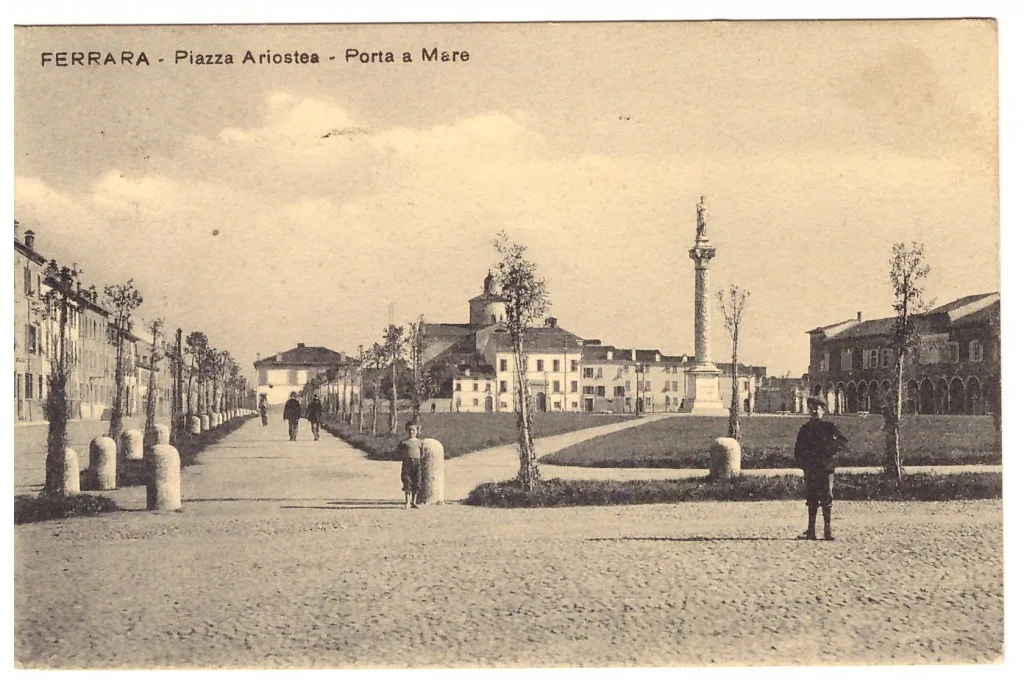Location & History
Location & HistoryLocation & History
Villa Horti della Fasanara is a place where history, art, and nature intertwine, located in the heart of what was once the ancient hunting reserve of the noble Este family. This residence served as the perfect retreat for rest, leisure, and the most elegant ceremonies, immersed in an enchanting natural setting that inspired poets and artists of the time.
Referred to as “the countryside within the Renaissance walls of Ferrara,” Villa Horti della Fasanara is situated in a one-of-a-kind area, where nature and urban engineering merge into perfect harmony. This vision was realized between 1493 and 1505 under the guidance of court architect Biagio Rossetti, at the request of Duke Ercole I d’Este, who aimed not only to fortify the city against potential Venetian attacks but also to expand the urban scope of Renaissance Ferrara, creating an ideal city where beauty and functionality coexisted.

The area extends from Porta degli Angeli, located at the end of the magnificent Corso Ercole I d’Este, one of the city’s most important streets, lined with prestigious buildings such as the famous Palazzo dei Diamanti, a Renaissance architectural masterpiece. Nearby stands a fortification dating back to 1525, shrouded in legends and mysteries, which has earned it the nickname “Casa del Boia” (House of the Executioner). This place, rich in historical intrigue, marks the starting point of a route that continues along the embankment to the so-called Punta della Montagnola. Here, an artificial hill, created in the 16th century, served as a privileged viewpoint from which one could admire the city and the surrounding landscape.
Along the path, one encounters green spaces that were once used for orchards and gardens, an essential element in the Renaissance vision of the city as a place of harmony between man and nature. These spaces connect to Via delle Erbe and culminate in the scenic Piazza Ariostea, one of the symbols of the Addizione Erculea, an ambitious urban project commissioned by Duke Ercole I and carried out between the late 15th and early 16th centuries. The square, with its vast green space and the elegant buildings surrounding it, remains one of the most iconic places in the city.

A particularly fascinating element of this area is the “Canale dei Giardini” (Canal of the Gardens), a waterway created to connect the main sites of the Este court. In the 16th century, the canal, flanked by lush vegetation, allowed for easy access to the Estense Castle, Belfiore, the Barchetto, the Montagnola gardens, and the Montagnone. These journeys, made on elegant boats, were not just simple trips but true sensory experiences that combined natural beauty with the prestige of the court.
The area of the Horti della Fasanara was not only a functional space but also a symbol of the power and refined taste of the Estensi. Lavish banquets, courtly games, and hunts reserved for the noble elite were held here, all immersed in an atmosphere of luxury and beauty. The hunting reserve, with its forests and clearings, represented an oasis of peace and a refuge from city life, but also a strategically important site for demonstrating ducal power.
Today, Villa Horti della Fasanara preserves this historical legacy, offering visitors a unique experience where they can immerse themselves in the charm of a past era and rediscover the harmony between nature and architecture in one of the most picturesque and historically rich places in Ferrara.